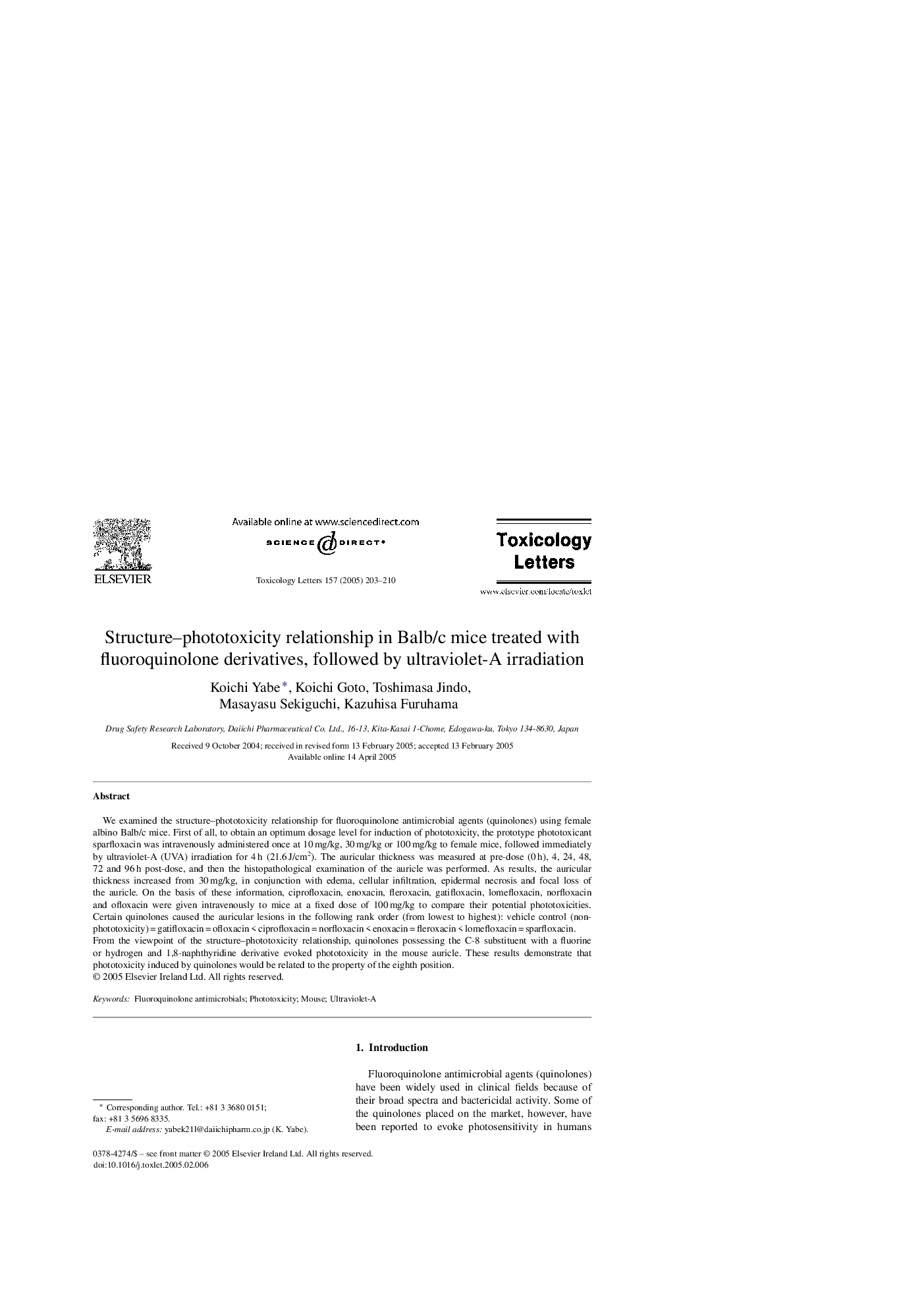| Article ID | Journal | Published Year | Pages | File Type |
|---|---|---|---|---|
| 9037179 | Toxicology Letters | 2005 | 8 Pages |
Abstract
We examined the structure-phototoxicity relationship for fluoroquinolone antimicrobial agents (quinolones) using female albino Balb/c mice. First of all, to obtain an optimum dosage level for induction of phototoxicity, the prototype phototoxicant sparfloxacin was intravenously administered once at 10 mg/kg, 30 mg/kg or 100 mg/kg to female mice, followed immediately by ultraviolet-A (UVA) irradiation for 4 h (21.6 J/cm2). The auricular thickness was measured at pre-dose (0 h), 4, 24, 48, 72 and 96 h post-dose, and then the histopathological examination of the auricle was performed. As results, the auricular thickness increased from 30 mg/kg, in conjunction with edema, cellular infiltration, epidermal necrosis and focal loss of the auricle. On the basis of these information, ciprofloxacin, enoxacin, fleroxacin, gatifloxacin, lomefloxacin, norfloxacin and ofloxacin were given intravenously to mice at a fixed dose of 100 mg/kg to compare their potential phototoxicities. Certain quinolones caused the auricular lesions in the following rank order (from lowest to highest): vehicle control (non-phototoxicity) = gatifloxacin = ofloxacin < ciprofloxacin = norfloxacin < enoxacin = fleroxacin < lomefloxacin = sparfloxacin. From the viewpoint of the structure-phototoxicity relationship, quinolones possessing the C-8 substituent with a fluorine or hydrogen and 1,8-naphthyridine derivative evoked phototoxicity in the mouse auricle. These results demonstrate that phototoxicity induced by quinolones would be related to the property of the eighth position.
Keywords
Related Topics
Life Sciences
Environmental Science
Health, Toxicology and Mutagenesis
Authors
Koichi Yabe, Koichi Goto, Toshimasa Jindo, Masayasu Sekiguchi, Kazuhisa Furuhama,
